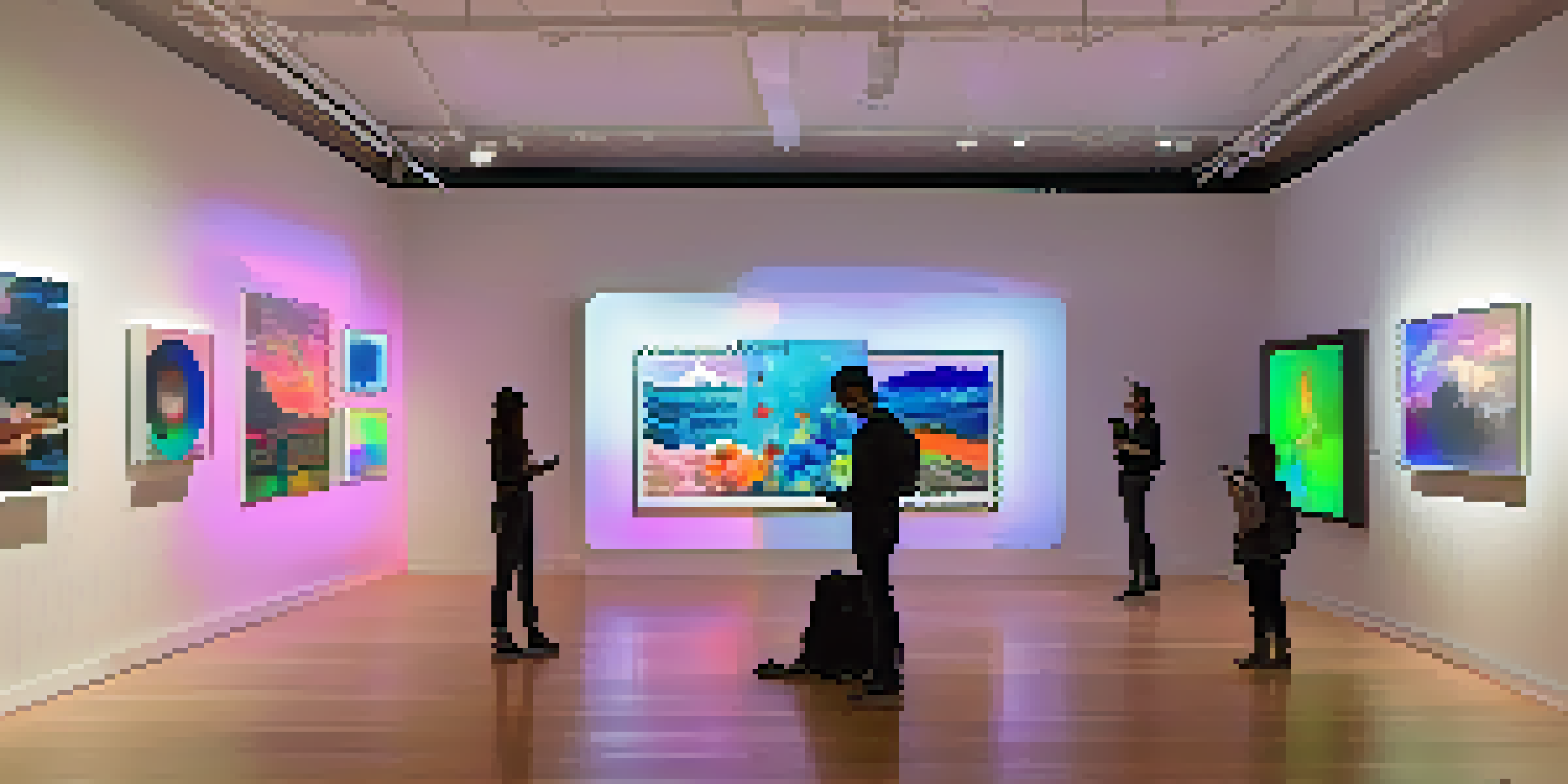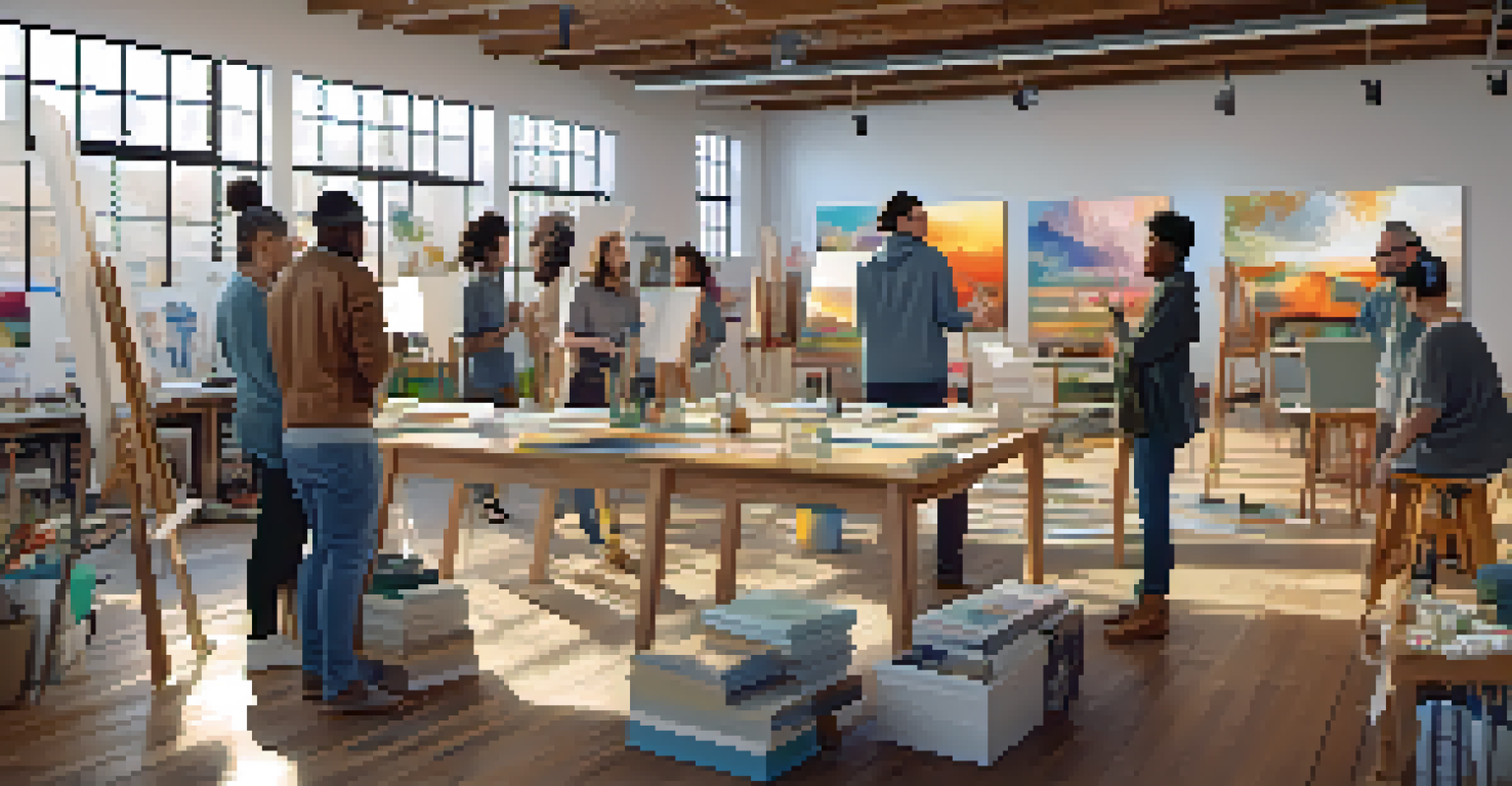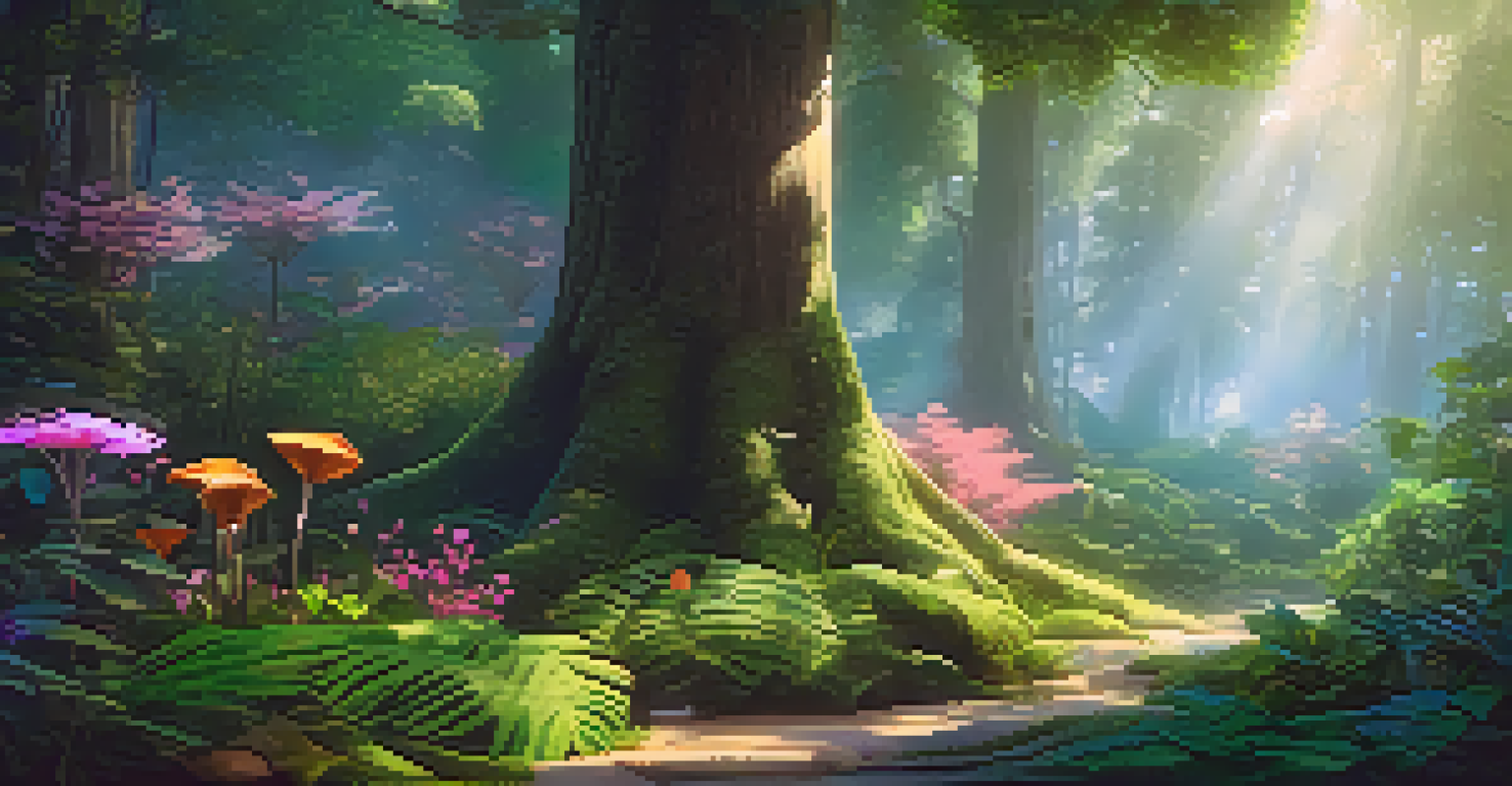The Impact of Digital Media on Art and Representation Today

The Evolution of Art in the Digital Age
Art has undergone a dramatic transformation with the rise of digital media. In the past, artists relied on traditional methods like painting or sculpture to express their creativity. Today, tools such as graphic design software and digital photography have broadened the scope of artistic expression, allowing for new styles and techniques.
Art is the most beautiful of all lies; it's a way to express what might otherwise remain unexpressed.
Digital art is not just a new medium; it also challenges our perception of what art can be. For instance, works created with computer algorithms or interactive installations invite viewers to engage in ways that traditional art forms do not. This evolution encourages artists to think outside the box and experiment with their creations.
Moreover, the accessibility of digital tools has democratized art-making. Aspiring artists no longer need to attend expensive art schools to learn their craft; a simple internet connection can lead to countless tutorials and resources. This shift has resulted in a thriving online community of creators who share and collaborate, enriching the art landscape.
Social Media's Role in Art Distribution
Social media platforms have revolutionized how art is shared and promoted. Artists can now showcase their work to a global audience with just a few clicks, bypassing traditional galleries and curators. This direct access to potential fans and buyers has empowered many artists to take charge of their careers.

Platforms like Instagram and Pinterest have become virtual galleries where art enthusiasts can discover and engage with new talent. For instance, a simple hashtag can connect an artist's work with millions of users, fostering a sense of community and collaboration. These platforms also allow for instant feedback, enabling artists to refine their craft based on audience reactions.
Digital Art Expands Creative Boundaries
The rise of digital tools has transformed artistic expression, encouraging innovation and experimentation beyond traditional methods.
However, this new landscape isn’t without challenges. The sheer volume of content on social media can make it difficult for individual artists to stand out. Additionally, the pressure to maintain a consistent online presence can distract from the creative process, forcing artists to juggle their passion with the demands of digital marketing.
The Rise of Digital Installations and Exhibitions
Digital installations have gained popularity in galleries and museums, creating immersive experiences for visitors. These exhibitions often blend technology with traditional art forms, inviting viewers to interact with the artwork in innovative ways. For example, a virtual reality installation can transport visitors to entirely new worlds, engaging their senses beyond mere observation.
The role of the artist is to make the world a better place through their art.
Such installations challenge the conventional boundaries of art, prompting discussions about the role of technology in our lives. Visitors are not just passive observers; they become active participants in the art, influencing the experience based on their interactions. This shift encourages deeper emotional connections and makes art more relatable.
Moreover, the COVID-19 pandemic has accelerated the adoption of virtual exhibitions, allowing audiences to explore art from the comfort of their homes. This adaptation has opened up new avenues for artists to reach wider audiences, proving that art can transcend physical spaces and limitations.
Diversity and Representation in Digital Art
Digital media has played a crucial role in amplifying diverse voices in the art world. Historically, many artists from underrepresented communities struggled to gain visibility. However, digital platforms allow these artists to showcase their work and share their stories, helping to reshape the narrative around representation in art.
For example, artists from various cultural backgrounds can now connect with like-minded individuals and create collaborative projects that highlight their unique perspectives. This inclusivity fosters a richer artistic dialogue and challenges the traditional art establishment, promoting a broader understanding of what constitutes art.
Social Media Transforms Art Sharing
Platforms like Instagram empower artists to showcase their work globally, fostering connections and feedback while presenting new challenges.
Furthermore, digital media enables artists to explore themes of identity and culture in innovative ways. The ability to easily manipulate images and create multimedia content allows for deeper explorations of personal and social issues, making art a powerful tool for advocacy and change.
Challenges of Copyright and Ownership in Digital Art
As digital art becomes more prevalent, issues surrounding copyright and ownership have emerged. Artists often worry about their work being used without permission, especially when shared on social media. The challenge lies in navigating a landscape where art can be easily copied and distributed.
Many artists are turning to digital rights management tools to protect their creations. These technologies help ensure that artists receive credit and compensation for their work, but they can also complicate the sharing process. Balancing accessibility with protection is an ongoing struggle in the digital art community.
Additionally, the rise of AI-generated art raises further questions about authorship. If a machine creates a piece of art, who owns it? This debate is still unfolding, but it underscores the need for artists to remain vigilant and proactive in safeguarding their rights in an ever-evolving digital landscape.
The Future of Art in a Digital World
Looking ahead, the relationship between art and digital media is likely to grow even more intertwined. Emerging technologies such as augmented reality (AR) and artificial intelligence (AI) are poised to transform how we create and experience art. Artists will continue to explore these tools, pushing the boundaries of creativity and expression.
Moreover, the growing emphasis on sustainability in the art world will influence digital practices as well. Artists may seek eco-friendly digital solutions, such as reducing energy consumption in their creative processes or using digital platforms to promote environmental awareness through their work.
Diversity Grows in Digital Art Scene
Digital media amplifies underrepresented voices, promoting inclusivity and collaborative projects that enrich the artistic dialogue.
The future also holds the promise of further democratization of art, as technology continues to break down barriers. We can expect to see more artists from diverse backgrounds gaining recognition and opportunities, enriching the global art landscape and fostering a culture of inclusivity and collaboration.
The Emotional Connection of Digital Art
Despite its technological nature, digital art can evoke powerful emotions just like traditional forms. The ability to create and share art quickly allows artists to respond to current events and societal issues, creating a sense of urgency and relevance. This immediacy can resonate deeply with audiences, fostering a shared connection through art.
Many artists use digital media to explore personal narratives and experiences, making their work relatable to viewers. By sharing their stories in a digital format, they invite audiences into their world, creating empathy and understanding. This emotional engagement reinforces the idea that art, regardless of the medium, serves as a reflection of the human experience.

Ultimately, digital media enriches the emotional landscape of art, proving that technology and creativity can coexist harmoniously. As artists continue to navigate this evolving terrain, the potential for meaningful connections and impactful storytelling remains limitless.